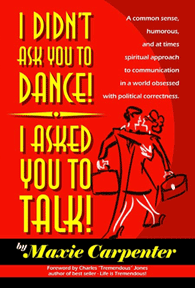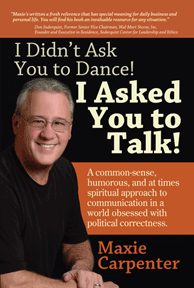|
Should Your Face Be on the Cover of Your Non-Fiction Book?A Wall Street Journal study found that a book cover must inspire potential buyers to invest in the book in just 23 seconds — they spend 8 seconds looking at the front cover deciding if they will turn the book over and spend another 15 seconds reading the sales copy on the back cover. When you can’t be there in person to sell every book, how do you gain the attention of the book buyer? How do you beat the clock in the race to convince your buyer to purchase before she puts the book back down on the shelf? You should know that very few book buyers just browse book store shelves. When people walk into a “bricks and mortar” book store or visit an online book store, it is often because they are looking for a book that someone recommended. They are on a mission. Sure, some people still wander the aisles in their favorite sections browsing the selections. However, a shocking number of people never darken the door of a book store; many choose to shop online instead. They may search online by topic but they are highly likely to search for the exact title of a book they heard about. One solution for an author is to create more “face time” by literally putting their face on the front cover of their book. Now, most publishers will tell you that your face should not be on your book's front cover unless you are a pop-culture icon like Dr. Phil, Oprah, or Fox News’ Bill O’Reilly. I have no idea why they say that. Maybe they just don't know anything about marketing and branding. So should your photo be on the cover of your non-fiction book? If it makes sense for the topic of the book and it showcases your expertise and research, my advice is YES! Here’s why. When we write non-fiction, we are often sharing our personal thoughts, expertise, and research. We are building a relationship with our reader one page at a time. They naturally want to know what we look like. They want to put a face with the name and voice. If you are a speaker (which you will be someday even if you aren’t now because public appearances generate book sales — it’s funny how money motivates us to conquer our fear of public speaking), your book helps position you as an expert. It becomes a branding tool — your face becomes part of your business card. Imagine this scenario: you are speaking at a conference and they only have space for one photo. They can choose either the cover of the book or your publicity photo. I'd bet money that many would choose the book cover if it had your photo on it as well. People regard published authors as rock star experts and many organizations love to tout that they have a published author coming to their event. The “no face on the front cover” advice that publishers typically give has programmed the public to expect that only celebrities will have their face on their book — so if your face is on your book, you must be a celebrity, right? Seeing your face on the cover automatically piques the prospective book buyer’s interest because she wonders who the heck you are and why she hasn’t seen you before. The average human is way more drawn to eyes than to text-only book covers. There is something in our DNA that draws us to other humans — even if only to pictures of other humans. I’m convinced that if you can’t put your picture on your book cover, you should put someone else’s picture on the cover. The purpose of your cover is to attract attention and a human face can do that best — followed closely by animal faces. For a speaker, the sales process is a bit different. If audience members love the speaker’s message and he has a book on the same topic, they will race to the back of the room to buy his book. If they love the speaker, they will want to take him home with them and learn more about his topic of expertise. A book is an excellent way to do that. In fact, it doesn’t really matter what the cover looks like. The speaker’s baby picture could be on the front and it wouldn’t matter. The audience members made the buying decision before they ever saw the book. Maxie Carpenter wrote a book a few years ago called, I Didn’t Ask You to Dance, I Asked You to Talk! He followed his publisher’s advice and didn’t put his face on the front cover. The publishing company designed him a flashy red cover with a sharp graphic. Overall, it was a very nice cover. As Maxie moved forward in his speaking and consulting career, he began to realize what an important branding tool his book was. He wished he had put his face on the cover of his book. He still had 4,000 copies of the original book. Fortunately, his book was case bound — hardcover — with a full-color dust jacket, so he could just order a new dust jacket. He not only loves the way the new jacket looks but realizes that it will help promote his personal brand as both a speaker and an expert in his field. Look at the difference between the two covers.
So What Are the Pitfalls?Every author should have some great photos shot by a commercial photographer. The poses should reflect what your cover designer might want to do with the book. A good designer can work with whatever you have but it pays to meet with the designer before you get your photos taken. Your designer can help you choose poses and clothing colors for your shoot so everything fits the design perfectly. Your photo should look like you normally would look for your public appearances. Make sure your “look” is current but evergreen — nothing too trendy that would quickly date your book cover. If you love trendy fashions and hairstyles, you might be wise to consider leaving your face off the front cover. If your topic is evergreen, your look should be as well if you want your book cover to enjoy a long shelf life. This is typically tougher to accomplish for a woman than a man because women’s styles change more drastically. What if you don’t think you are attractive? We are all critical of our own looks. The truth is that some of the most beautiful people in the world aren’t that photogenic. You don’t have to be beautiful for the camera to love you. Have fun, be real, and smile from the inside. Learn to "smile" from your eyes. If your topic lends itself to a fun photo, use yourself as art the way marketing guru Seth Godin does on many of his covers (www.sethgodin.com/sg/books.asp). What if you are afraid of putting your face out there because you might lose your privacy or get stalked? Put the idea of writing a book on a shelf. You’ll never sell enough books to make it worth your time if you aren’t willing to build a personal brand. You’ll do it much faster if your can connect your face with your name and your book by exposing yourself. That’s the last word on putting your face on your book cover.
|
||
Carrie Perrien Smith is a publishing, communication, and training industry veteran. Her company, Soar with Eagles (www.soarhigher.com), offers training, book publishing, event production, and consulting services as well as a professional speaker bureau. Her book publishing division primarily serves the needs of professional speakers. She is an expert on building lifelong business relationships and is the author of Networking Zone: The Business Referral Construction Guide and Currency: Striking Networking Gold in a Relationship Economy. Her corporate career spans 15 years, split between Texas Instruments and Wal-Mart Stores, Inc. She is also the faculty expert on book publishing and working with speaker bureaus for World Champion Speakers (www.worldchampionresources.com). |
 Volume 1, Issue 1
Volume 1, Issue 1
